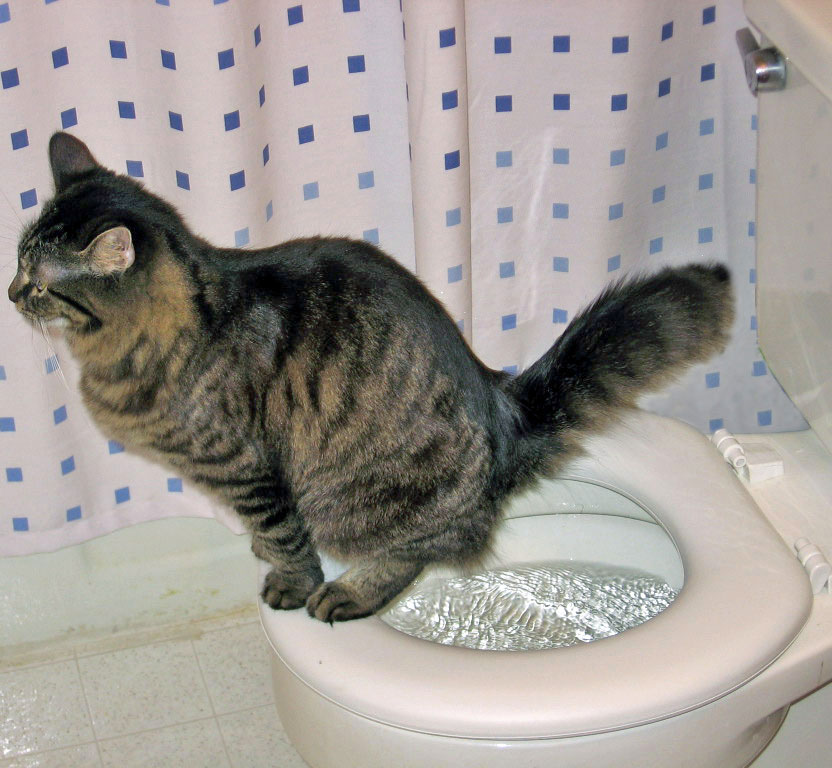The Risks of Disposing Cat Poop in Your Toilet - Preventive Measures
The Risks of Disposing Cat Poop in Your Toilet - Preventive Measures
Blog Article
Right here below yow will discover additional reliable data relating to Can You Flush Cat Poop Down The Toilet?.

Introduction
As cat owners, it's vital to bear in mind exactly how we get rid of our feline buddies' waste. While it may appear practical to purge feline poop down the toilet, this practice can have destructive repercussions for both the environment and human wellness.
Ecological Impact
Flushing cat poop presents damaging virus and parasites right into the water system, posing a substantial risk to marine environments. These contaminants can negatively impact aquatic life and compromise water quality.
Wellness Risks
In addition to ecological worries, flushing feline waste can also posture health and wellness risks to people. Cat feces might include Toxoplasma gondii, a bloodsucker that can trigger toxoplasmosis-- a potentially serious illness, especially for pregnant females and individuals with weakened immune systems.
Alternatives to Flushing
The good news is, there are more secure and a lot more liable means to dispose of cat poop. Think about the complying with alternatives:
1. Scoop and Dispose in Trash
The most typical method of taking care of cat poop is to scoop it right into an eco-friendly bag and toss it in the garbage. Make certain to make use of a committed clutter inside story and dispose of the waste quickly.
2. Use Biodegradable Litter
Select naturally degradable feline trash made from materials such as corn or wheat. These trashes are environmentally friendly and can be safely gotten rid of in the garbage.
3. Bury in the Yard
If you have a yard, take into consideration hiding cat waste in a designated location far from veggie yards and water sources. Make sure to dig deep sufficient to prevent contamination of groundwater.
4. Install a Pet Waste Disposal System
Invest in a pet garbage disposal system especially created for feline waste. These systems use enzymes to break down the waste, reducing smell and ecological impact.
Conclusion
Liable family pet ownership extends past giving food and sanctuary-- it also involves correct waste administration. By avoiding flushing cat poop down the commode and selecting different disposal methods, we can reduce our environmental impact and protect human wellness.
Why Can’t I Flush Cat Poop?
It Spreads a Parasite
Cats are frequently infected with a parasite called toxoplasma gondii. The parasite causes an infection called toxoplasmosis. It is usually harmless to cats. The parasite only uses cat poop as a host for its eggs. Otherwise, the cat’s immune system usually keeps the infection at low enough levels to maintain its own health. But it does not stop the develop of eggs. These eggs are tiny and surprisingly tough. They may survive for a year before they begin to grow. But that’s the problem.
Our wastewater system is not designed to deal with toxoplasmosis eggs. Instead, most eggs will flush from your toilet into sewers and wastewater management plants. After the sewage is treated for many other harmful things in it, it is typically released into local rivers, lakes, or oceans. Here, the toxoplasmosis eggs can find new hosts, including starfish, crabs, otters, and many other wildlife. For many, this is a significant risk to their health. Toxoplasmosis can also end up infecting water sources that are important for agriculture, which means our deer, pigs, and sheep can get infected too.
Is There Risk to Humans?
There can be a risk to human life from flushing cat poop down the toilet. If you do so, the parasites from your cat’s poop can end up in shellfish, game animals, or livestock. If this meat is then served raw or undercooked, the people who eat it can get sick.
In fact, according to the CDC, 40 million people in the United States are infected with toxoplasma gondii. They get it from exposure to infected seafood, or from some kind of cat poop contamination, like drinking from a stream that is contaminated or touching anything that has come into contact with cat poop. That includes just cleaning a cat litter box.
Most people who get infected with these parasites will not develop any symptoms. However, for pregnant women or for those with compromised immune systems, the parasite can cause severe health problems.
How to Handle Cat Poop
The best way to handle cat poop is actually to clean the box more often. The eggs that the parasite sheds will not become active until one to five days after the cat poops. That means that if you clean daily, you’re much less likely to come into direct contact with infectious eggs.
That said, always dispose of cat poop in the garbage and not down the toilet. Wash your hands before and after you clean the litter box, and bring the bag of poop right outside to your garbage bins.
https://trenchlesssolutionsusa.com/why-cant-i-flush-cat-poop/

As a devoted person who reads on Can You Flush Cat Poop Down The Toilet?, I imagined sharing that portion was a good thing. Be sure to take a moment to promote this article if you appreciated it. I value reading our article about How to Dispose of Cat Poop and Litter Without Plastic Bags.
Request An Appointment Report this page